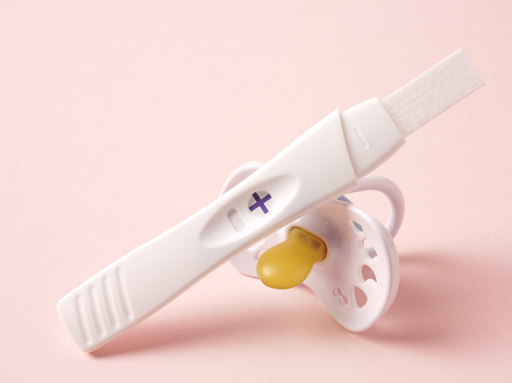1.3 Detecting pregnancy
Today, pregnancy tests are ultra-accurate and can detect pregnancy after a few days. Later on in the pregnancy, if they wish to do so, parents can also discover the sex of their unborn child. ‘Gender Reveal’ parties are becoming more and more common, in particular in the USA. But how did people detect pregnancy and the sex of their child in the ancient world?
The simple answer is that there were supposed to be ways to be sure, even at the earliest stages of pregnancy. A woman of experience – that is, one who had had several pregnancies – would be able to recognise some of the signs, including nausea or a ‘heavy’ feeling. Later in the pregnancy, the movements of the baby would be the real proof that the woman was expecting.
A woman’s testimony and experience, then, were the best ancient pregnancy tests. On the other hand, the ancients had numerous fertility tests to ascertain whether a woman was ready to receive a man’s seed and grow a child.
You saw in Week 2 how the colour green was often used for eye remedies, but where fertility was concerned, red frequently featured. In the Hippocratic gynaecological texts, which date to Greece in the late fifth or early fourth centuries BCE, a test to check if a woman was fertile involved rubbing her eyes with ‘the red stone – if the drug penetrates, she will become pregnant’ (Nature of Women, 99). The power of the colour red continued after conception was achieved: a quick-birther, a remedy to speed up a difficult labour, involved wrapping red wool around the ingredients and hanging this round the woman’s loins (Diseases of Women, 1.77). The traditional Roman medicine summarised by Pliny the Elder had a very similar fertility test, without specifying colour: rubbing any drug substance on her eye-lids and if it showed up in her saliva, it was a ‘sure sign’ that she was fertile (Natural History, 7.14.67). You also considered in Week 2 what a healthy appearance would look like. In the ancient world, it was believed that sunken eyes meant that a woman was pregnant (Hippocrates, Barrenness, 3).
Another type of fertility test involved smells. For instance, a woman had to insert a head of garlic in her vagina, leave it for the night, and see the next day whether she smelled of garlic through the mouth. If she did, she had a good chance of getting pregnant (Hippocrates, Barrenness, 2). The ancients believed that a sort of tube linked a woman’s mouth to her vagina, and blockages in that tube could prevent pregnancy. The garlic test revealed that there was no blockage, so the woman was fertile.
The Greeks and Romans also had various tests to determine whether a woman was expecting a boy or a girl. For instance, the Hippocratic text On Sterile Women states that:
Pregnant women who have spots on their face are carrying a female, whereas those who retain their good complexion are generally carrying a male. If the nipples turn upwards, a woman is carrying a male, whereas if they turn downwards, a female.
It is not difficult to see that being pregnant with a girl was considered a negative experience, while being pregnant with a boy was a positive one. A woman expecting a boy was ‘glowing’, her nipple turned upwards – the upwards direction being positive – while the woman expecting a girl was covered in unsightly freckles, with sagging breasts.
Activity 1
- Think of the folkloric ways of finding out the sex of a baby in your country. Do you look at the shape of a woman’s belly? Do you consider the way in which she walks? Do you swing a ring over her belly?
- What do these tests tell us about social hierarchies? If they are plainly sexist, why are they still popular?

